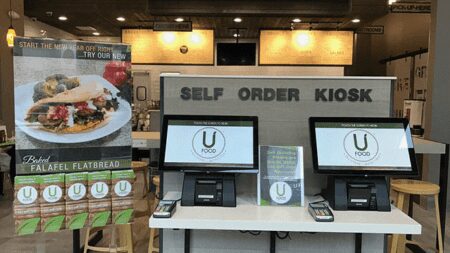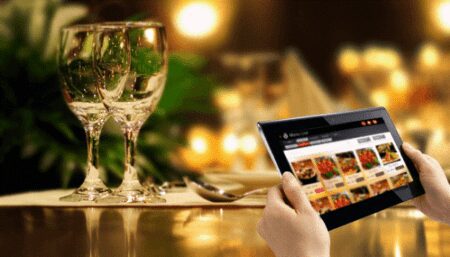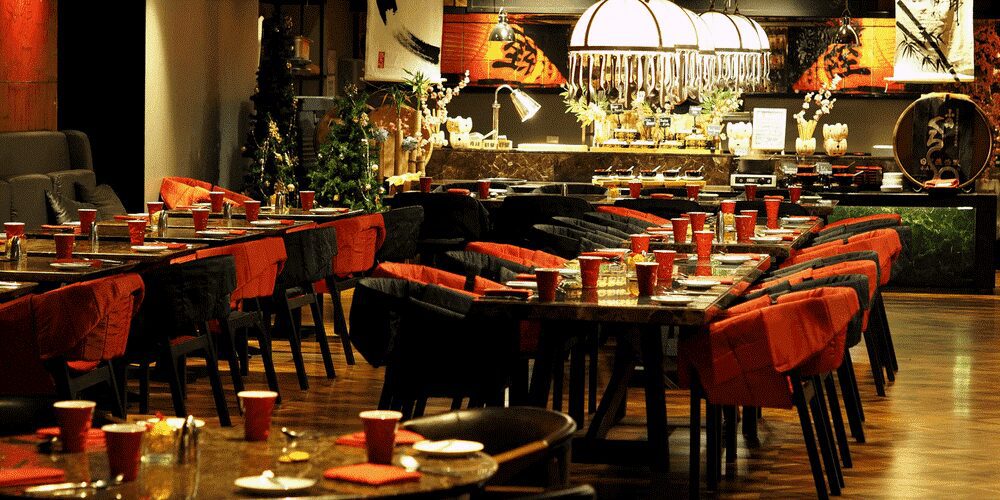Technology touches every aspect of our lives. Technology is designed to make our lives easier, better and faster.
The growing mobile world and social media have dramatically turned the tables everywhere, in every industry. And these ever-rising technologies have also impacted the bottom line of the restaurant businesses. Today’s technological buzzes like machine learning, artificial intelligence, smart devices, wearable devices, mobile apps – all these are cumulatively reshaping the restaurant industry.
According to a recent study by the National Restaurant Association, more than 81 per cent of restaurants uses a point-of-service (POS) or electronic register system.
Think about UberEats, Dominos, Starbucks, Little Caesars and others. Don’t we love the mobile app of Starbucks, online ordering platform of Dominos, or vending machine pickup system of Little Caesars?
To sum up, we can say that branded mobile apps, active social media presence and analytics, online ordering and payment, etc. are considered as the innovative restaurant tech tools. These tech tools are set to hit the restaurant industry and impact their functioning to create an overall better dining experience for customers.
What exactly technology does in the restaurant industry?
Mobile technology in the restaurant industry is not just about ordering and paying online or via mobile app. It’s much more beyond this.
Digital tracking of inventory
![]() Remember the pen and paper method of physical inventory tracking? Well, it's getting obsolete now. Most of the restaurants have embraced electronic method of tracking inventory. Digital tracking of assets and inventory provides restaurant owners with better visibility of their main assets. It results in the optimization of just-in-time raw material order and avoids wastage. The purchase managers can adjust frequency and timing to purchase ingredients and required raw materials to keep track of actual product counts. Data tracked through software can alert managers to minimise waste, theft and over-portioning or under-portioning.
Remember the pen and paper method of physical inventory tracking? Well, it's getting obsolete now. Most of the restaurants have embraced electronic method of tracking inventory. Digital tracking of assets and inventory provides restaurant owners with better visibility of their main assets. It results in the optimization of just-in-time raw material order and avoids wastage. The purchase managers can adjust frequency and timing to purchase ingredients and required raw materials to keep track of actual product counts. Data tracked through software can alert managers to minimise waste, theft and over-portioning or under-portioning.
Facial Recognition Payment

Image Source: thespoontech
Heard about “smile to pay” facial recognition system? It applies to the restaurant industry too. With smartphones becoming smarter day-by-day, how can the industries stay behind?
All thanks to AI (artificial intelligence), that now it is effortless to pay your restaurant bill with just a smile. Customers can cash out their orders by just smiling at the screen due to face based recognition payment method. Here, a 3D webcam recognises the customer’s facial features and links it to their online payment account. On login, the customer has to confirm the payment by entering their phone number.
Since customers can log in through their face, it becomes very convenient for restaurants to reduce labour costs and makes operations more efficient.
Tabletop Tablet Manager
 Sick of waiting for a waiter, menu card and placing an order? The mobile revolution has made the tabletop tablet ordering systems a considerable part of the casual dining restaurant industry makeover. Instead of waiting for the waiter, under this technology, once the customers take their seats, they can immediately view the menu via their table-side ordering system.
Sick of waiting for a waiter, menu card and placing an order? The mobile revolution has made the tabletop tablet ordering systems a considerable part of the casual dining restaurant industry makeover. Instead of waiting for the waiter, under this technology, once the customers take their seats, they can immediately view the menu via their table-side ordering system.
On the other hand, the restaurants can utilize this saved time of waiter in taking order in other activities. Of course, it saves the amount of labor costs too.
According to a survey by PubsOnline, customers who enjoyed using a tabletop device and were more likely to return to the restaurant because it was more likely to leave a higher tip.
On the other hand, the restaurants can utilise this saved time of waiter in taking order in other activities. Of course, it saves the amount of labour costs too.
Bluetooth temperature sensors
HACCP (food safety) checklists are no lesser than a pain. To avoid hotch-potch and mess of these checklists, many restaurants have started utilizing Bluetooth temperature monitoring systems. These sensors ensure that the quality of their food and equipment are up to par.
The handpick benefits of using handheld probes and fixed sensors are briefed below :
- Restaurants can either manually or automatically measure temperatures of their key assets
- It eliminates paper logs.
- Sensors can record wireless temperature readings in HACCP records so that employees don’t need to do so.
- Wireless temperature systems are a proactive approach to food safety. They help restaurants to avoid product loss and protect customer safety.
- Further, such sensors help prevent staff members from misrepresenting daily reports
- Through sensors, restaurant managers can program customized limits for each food and equipment. If the temperature limits are crossed beyond acceptable threshold, it shoots alerts for actions.
Closing thoughts:
What all has been depicted are just a few of the practical benefits of embracing technology in the restaurant business. Although latest technologies come at a cost, the ROI that restaurants experience in their business is well worth the investment.
Over and above, restaurants can benefit a lot from customised and personalised marketing, digital reservations, optimised scheduling and automated purchases.
In most mega-industries, the finale for data and analytics is automation driven by artificial intelligence (AI) and machine learning (ML), and the restaurant industry is all set to hug this trend.
Post Summary:
Mobile technology in the restaurant industry is not just about ordering and paying online or via mobile app. It’s much more beyond this. Read more to explore why and how!
Online Marketing Tools


























